
Under the command of Feldmarschall Erwin Rommel, the 21st Panzer Division was originally one of the two armoured divisions that made up the Deutsches Afrikakorps in the North African campaigns of 1941-1943. You can read more about the 21st and its role in Africa here.
The division was reconstituted in June 1943 in Normandy, where it remained on garrison duty until the fated Allied invasion of June 6 1944. Had Rommel had his way, the 21st and other Panzer divisions would have been positioned with a mind for coastal defence. Instead, the adopted method was to hold them in reserve further inland as a counterattack force. Had the former been chosen, the outcome of D-Day may have been very different.
D-Day Counterattack
If you don’t succeed in throwing the British into the sea we shall have lost the war.
General Erich Marcks to Colonel Hermann von Oppeln-Bronikowski.
As it was, the 21st Panzer Division was the only German armoured division poised to launch any counterattack during the Allied landings on D-Day. They were instrumental in stifling the British hopes of reaching Caen during their initial attack. However, conflicting orders and an impromptu reorganisation of the division, as well as a severe delay caused by having to negotiate the freshly bombed streets of Caen, meant that even the 21st’s reaction to the D-Day landings was far slower than it might have been.
This delayed response meant that British armour had time to establish itself on Perriers Ridge. They were able to take out 16 Panzer IVs for no losses. However, Kampfgruppe Rauch (192nd Panzer Grenadier) penetrated around the left flank, finding a gap between British and Canadian forces west of Lion-sur-Mer. The effect was largely psychological, rather than destructive, halting the British advance for the day.
Due to the scattered deployment of the German armoured divisions before D-Day, this breakthrough could not be exploited. No reserves were available to reinforce the 21st. And, upon witnessing the Allied airborne reinforcements (even though these subsequently veered off east), the division eventually fell back to just north of Caen. The division’s losses were substantial, having lost 70 of their 124 tanks. Any opportunity to exploit the gap had been permanently lost.
After D-Day
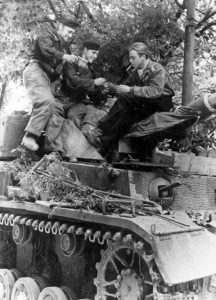
The division continued to operate on the front through the remainder of June and into July. It was all but destroyed in the Falaise Pocket during the closing stages of the Battle of Normandy. Later, The division neglected to take a direct part in the Ardennes Counteroffensive (otherwise known as the Battle of the Bulge), opting instead to provide flanking support fire. This may well have saved it from destruction (if not heavy losses). It did take part in the ill-fated Operation Nordwind, the last major German offensive on the Western Front, in an attempt to sever US supply lines to Strasbourg.
In January 1945, the division saw action on the Eastern front but ultimately surrendered to the Red Army on 29 April 1945.
Representing the 21st Panzer Division in Bolt Action
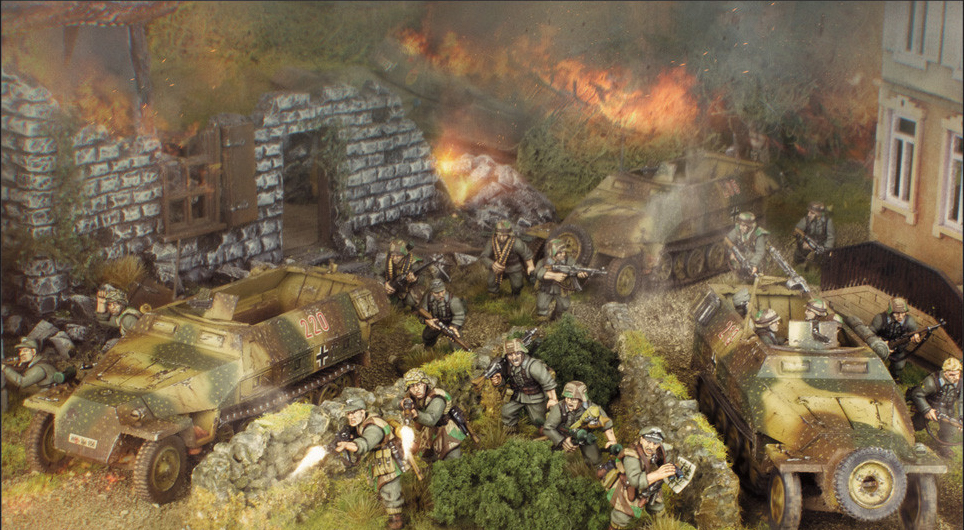
The D-Day Overlord Campaign Book theatre selectors include a 21st Panzer Division Panzergrenadier Reinforced Platoon (D-Day) (Page 171). The bulk of this force is composed of Heer Grenadier squads mounted in Regular Sd.Kfz 251/1 ausf D halftracks.
You’ll also find a theatre selector that represents the division specifically on D-Day- The Kampfgruppe Oppeln Armoured Reinforced Platoon. The only requirements for this force are three Panzer IVs (Gs or Hs), but combine them with some Panzergrenadiers and you’ll have a mobile and highly versatile strike force.
If you want to capture some of the more unique elements of the 21st, you can supplement your core force with one (or more!) of Major Becker’s Lorraine Schleppers. Becker’s creations stemmed from a huge number of captured chassis, so there’s a massive potential for conversion to make your force unique!
The Panzer IV
The bulk of the Division was made up of the Panzer IV, with a few Panzer IIIs (though these would have been predominantly used in a reconnaissance role). Commanders would typically ride in the ‘H’ Variant of the Panzer IV, with other variants in use including the D through G configurations.
By the latter half of the war, roughly half of all German tanks were Panzer IVs. It was the only tank that was in production throughout the war. Originally conceived as an infantry-support vehicle, subsequent versions soon armed it with a 72mm dual-purpose cannon, capable of taking out most enemy armour. With this anti-tank weaponry, the Panzer IV became the German main battle tank of the war.
Major Alfred Becker
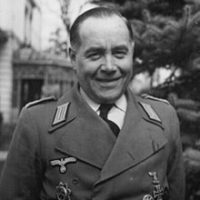
A veteran of the First World War, Becker saw action on the Eastern front, impressing with his engineering ingenuity; he was soon transferred to France, charged with reinforcing the 21st Panzer division with repurposed captured vehicles. He wasn’t limited to French chassis and made use of whatever he could get his hands on. All in all, providing the 21st with about 1,800 converted vehicles.
1942 saw Major Becker directing the conversion of around 360 Lorraine armoured carriers into mobile artillery vehicles. He mounted 7.5 cm Pak 40 anti-tank guns and 10.5 cm leFH 18 howitzers to the French tractors and went on to command this motorized assault gun Battalion in Normandy.
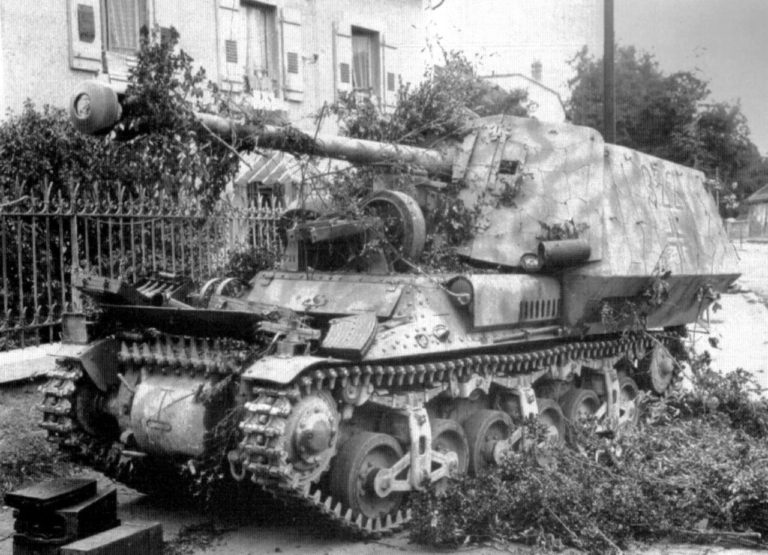
There is a lot of scope for conversion when putting together a 21st Division Bolt Action force. Although Becker made use of predominantly Lorraines, he converted around 1,800 vehicles in total. Do some research or use your imagination!
Transports and Tows
The officers and their staff typically rode into battle on Sd.Kfz 251 half-tracks. The 21st had several regiments of Panzergrenadiers or motorized infantry. They were mounted in trucks, or Unic P107 half-tracks if they were available.
For more firepower support, in addition to those mounted on the aforementioned Lorraine Schleppers, there were 75mm PaK 40s, towed by trucks. The division also had access to the dreaded 88s, which could be towed by French Laffly tractors.
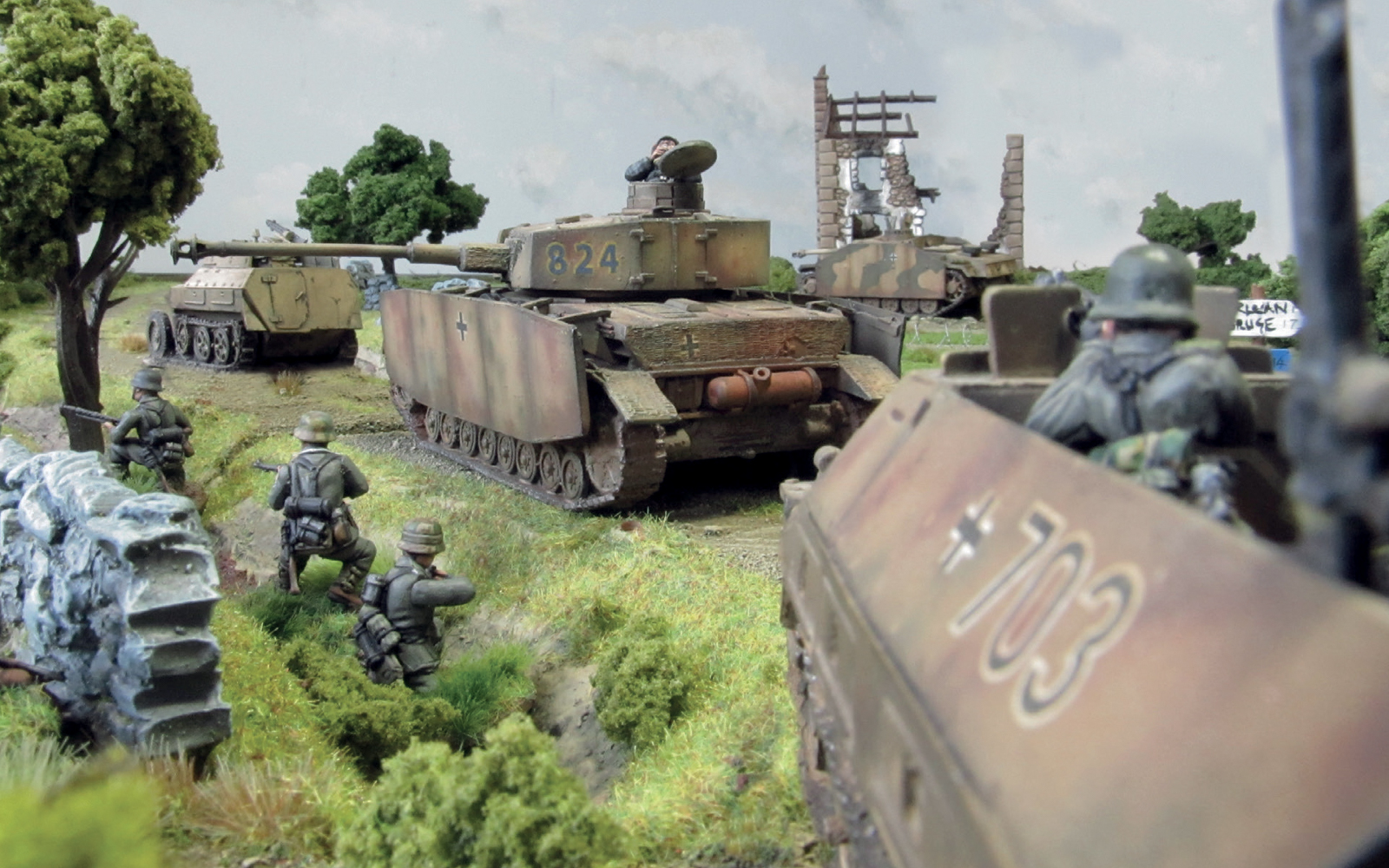

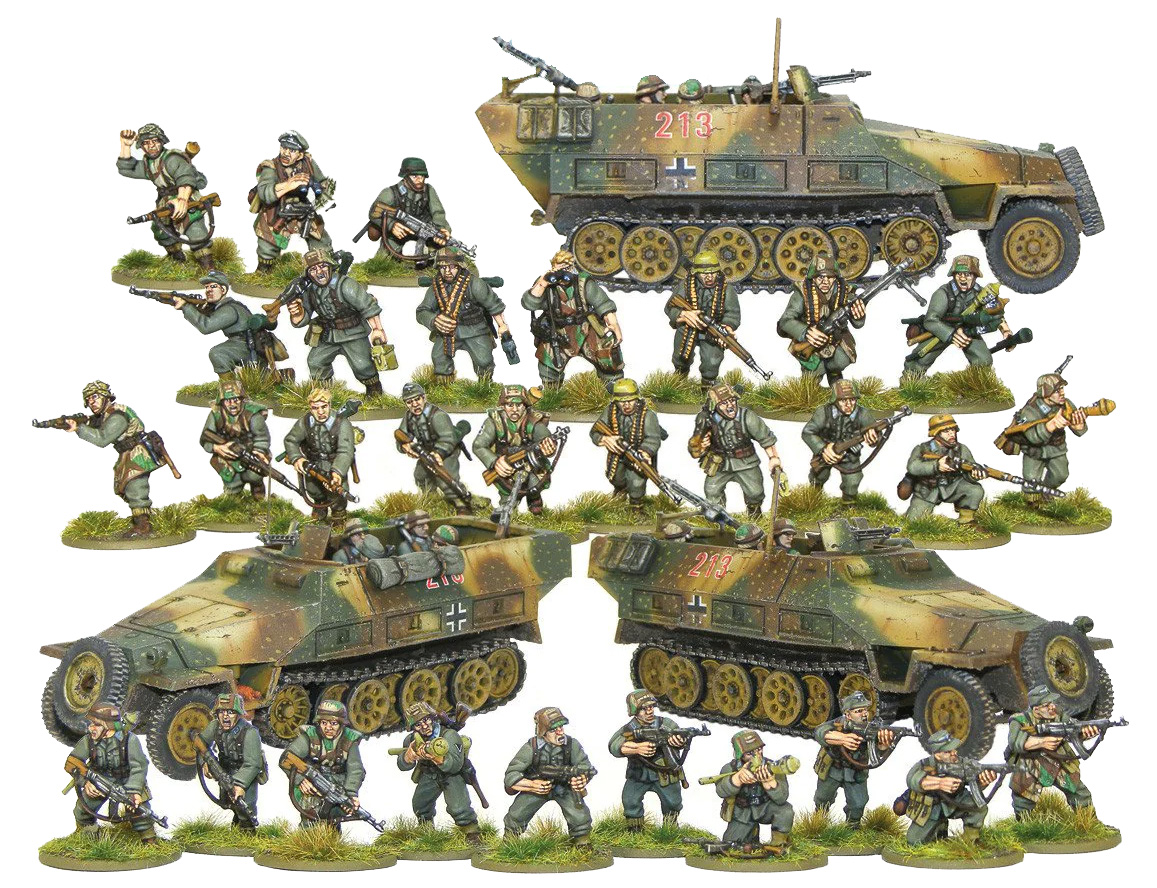
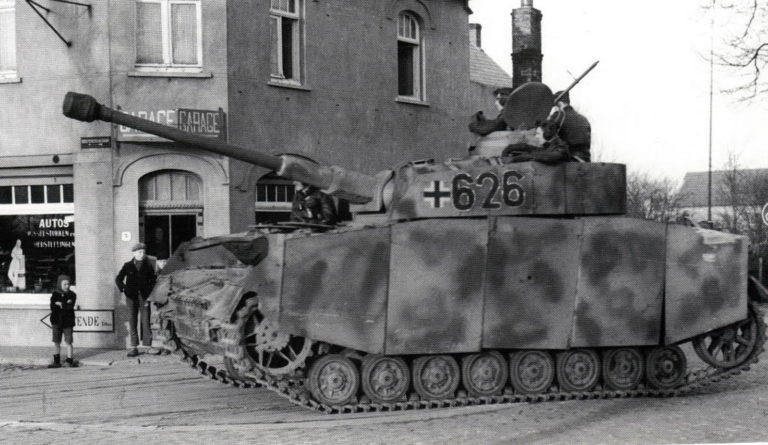
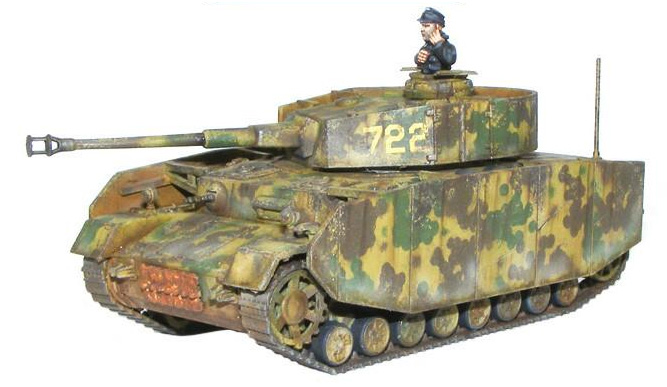
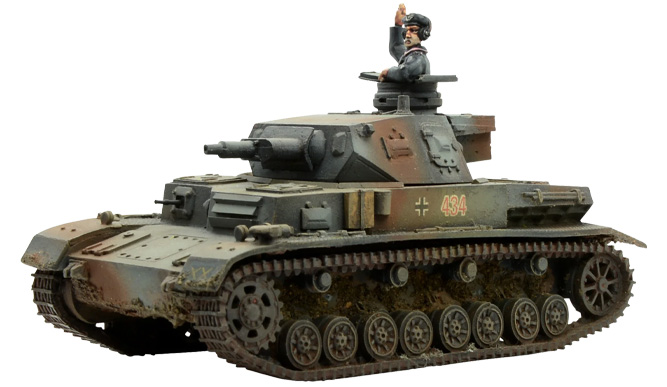
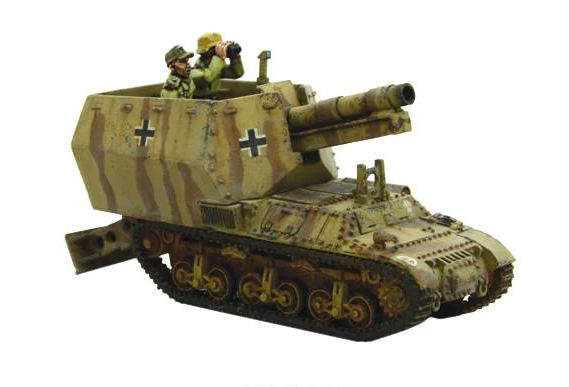
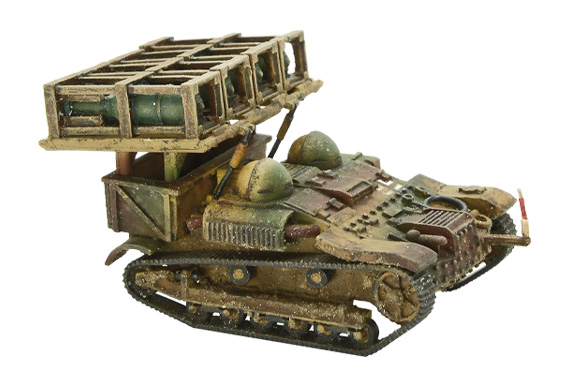
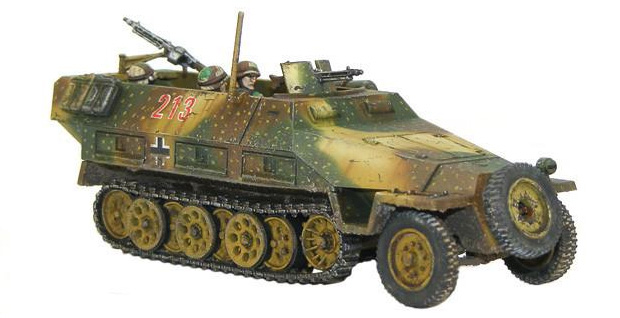
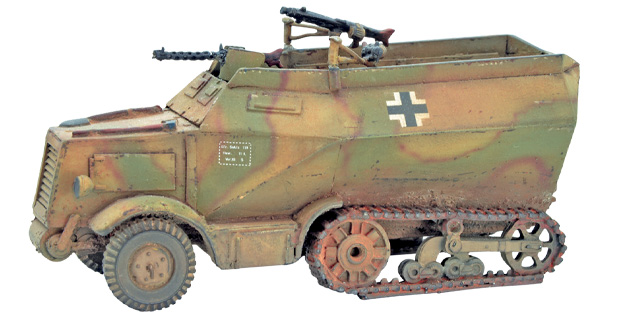
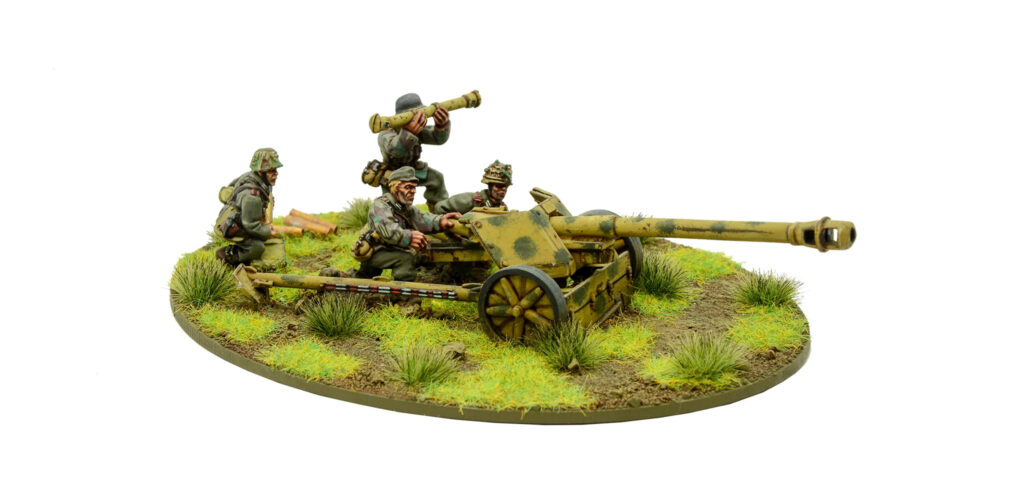
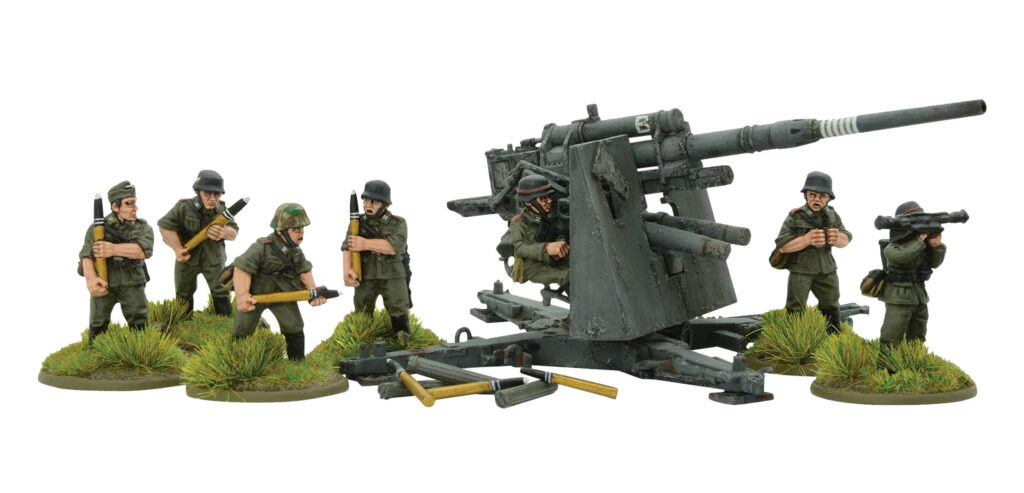
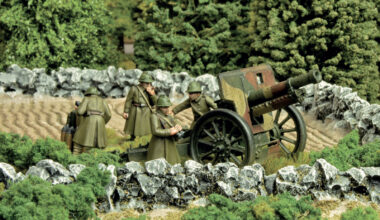
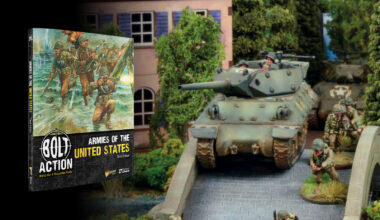
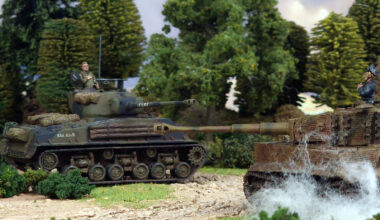
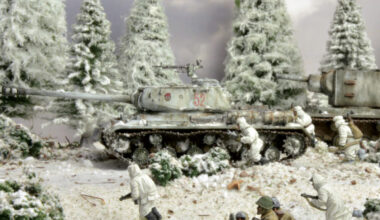
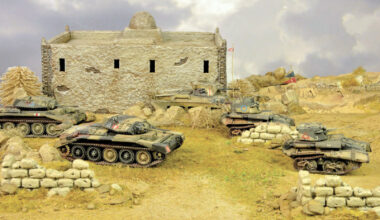
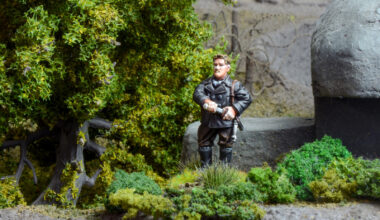
3 comments
If anyone is looking to represent the 21st Panzer, be sure to read the memoirs of Hans Von Luck. He commanded the 21st during D day, and the book is interesting as it is an insight into Von Luck’s battlefield tactics. The strategy of using mobile artillery to support other elements of the force was core in Von Luck’s mind. What is also interesting is his subsequent incarceration by the Soviets, and his attitude to the SS that fought with him. He never have any of them up to the Soviets, probably spending more time as a prisoner because of it.
That was hard luck, having to surrender to the Soviets….
The Division’s two Panzergrenadier Regiments (each with one armoured and one motorised battalion) were not equipped with German SDKFZ 251 halftracks. Instead ithey received French P107 halftracks. The Reconnaissance Battalion however received both German and French armoured vehicles.
Comments are closed.